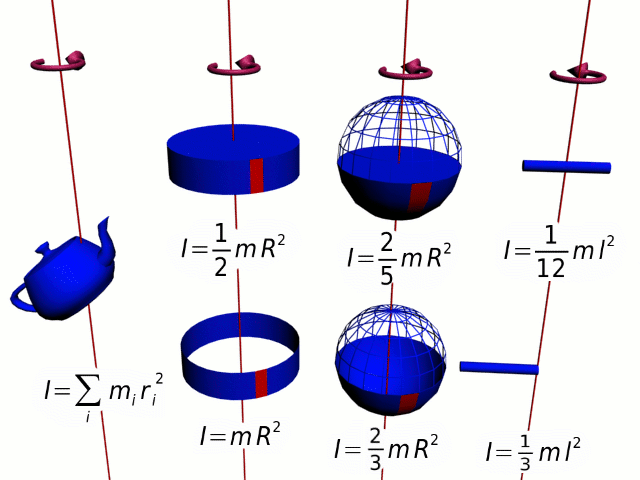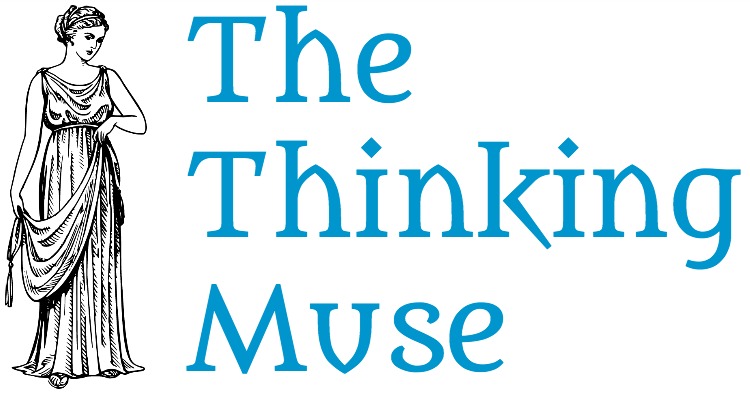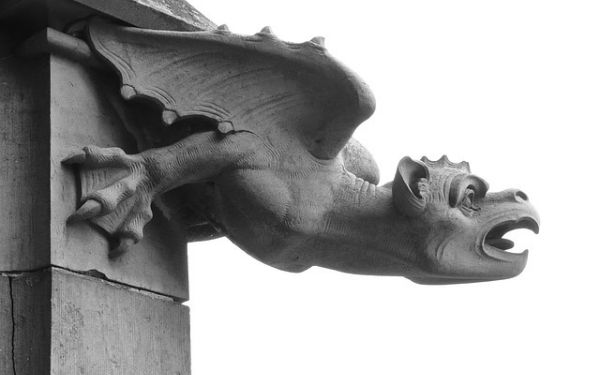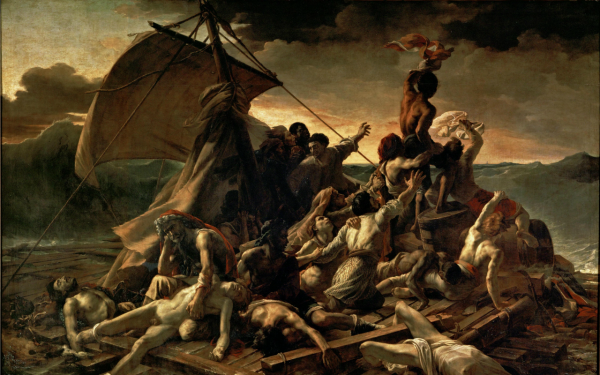WEEE!
If you’ve never sat in a swivel chair and spun yourself around, I’m afraid I am going to have to ask you to turn in your “human card.” Extending your arms and legs to slow down and immediately pulling them in tight to speed up. Entertaining, right?
While we may not be as graceful as a trained ice skater, the principle is the same. Angular momentum. Plus who cares what we look like, it’s fun!
There are many things in the world that rotate, spin,and cartwheel, including the world itself. Therefore, I thought it would be a great topic for the month.
So let’s start at the beginning…
What is angular momentum?

Credit: By PanCiasteczko (Own work) [Public domain], via Wikimedia Commons
The easiest way to describe it is the momentum an object has when spinning or rotating around something.
It applies to many scenarios (shown on the right). A disk or ring. Solid or hollow. Centered or offset. All things spinny and rotatey. By spin I mean turn on an axis within the body. By rotate I mean turn about a point outside the body.
The most interesting aspect of angular momentum is that it is conserved. Meaning it will always stay constant for a closed system.
I won’t bog you down with a lot of math, but a basic formula will be helpful. It can be calculated:
Angular momentum = tangent velocity x radius x mass
Just as Newton’s first law states, objects in motion stay in motion. An object that is rotating will stay rotating. Just as an object that is not rotating will continue to not rotate, unless another force is applied of course.
The classic demonstration of this is a spinning ice skater. When she draws her arms inward, she is decreasing her radius. Since her mass remains the same and angular momentum is always constant, the tangent velocity must go up. She spins faster.

Nancy Kerrigan (USA) performs a scratch spin at the end of her freeskate at the 1994 Lillehammer games. Credit: Power Forward
What is the Coriolis effect?
Essentially, this effect causes objects to appear to curve as they travel across Earth. The Earth rotates faster at the equator than it does at the poles because the Earth is wider at the equator.
Just imagine an object on the equator of a globe and one near the top of the globe. Give the globe a spin and it is easy to see the object at the equator is moving faster.
In the northern hemisphere, objects appear to deflect to the right. In the southern hemisphere, it appears to deflect to the left.
If this is confusing think of this example. Say you are riding a bike holding a ball. You want to toss the ball into a resting basket as you ride past it. Do you throw the ball when you are right next to the basket? No. The ball will land beyond the basket in the direction of your travel. It will appear deflected because of the difference in speed between you and the basket.
With northern hemisphere wind, high-pressure systems from near the equator will pass low-pressure systems from the north pole on the right. This results in the counter-clockwise rotation, as can be seen in northern hemisphere hurricanes.
Of course, the Coriolis effect is for large scale systems. When other forces of notable magnitude are added to the system, it complicates things and the results may differ.
10 instances of angular momentum
1. Tops
Let’s start at the beginning. As young scientists, I mean children, we have all played with a top. Turning it, seeing how long it would spin, trying it out on different surfaces.
We weren’t aware that we were performing physics experiments, we were just having fun. We didn’t stop to think we were adding more torque to the system by turning it harder or seeing how the friction between the tip and the floor slowed it down over time. That sneaky science just hid right underneath our noses.
2. Toilets and Tubs
Another curiosity we entertained in our childhood. Every kid loves toilet stuff. We were mesmerized about why water drained swirling in a particular direction.
The Coriolis effect is often cited causing a counter-clockwise swirl north of the equator and a clockwise swirl south of the equator. Truth be told, the scale of a sink, toilet, or tub are too small for the Coriolis effect to really have much influence in the draining.
The water temperature variations, friction from the sides of the vessel, and the initial turbulence of the fluid all play a much larger role in the direction of the swirl. If these elements are all constant, then the Coriolis effect may be the most dominant.
3. Football
A lot of people dream of being the big star of the team, the quarterback. Although it may be less and less with recent findings on subsequent concussions and the permanent brain damage it can lead to.
Regardless, a great quarterback needs to know how to throw the football. A good throw requires a tight spiral on the ball. The tighter the spiral, the more aerodynamically and precise the flight of the ball. All thanks to angular momentum.
4. Darts, Rifles, and other trajectory activities
The same principle applies here as in the case of football.
The rotation of the dart, bullet, or arrow will stabilize its flight. This is because the object wants to maintain its angular momentum. So it will head in a straight path. Since these activities are all about precision and accuracy, that would be the skill to master.
Just imagine if you perfected this shot? What a hotshot!
5. Helicopters
Even if you know nothing about helicopters they are easy to identify with their large rotors on top.
However, the motion involves a lot more than just the top rotor. If only the top rotor spins and the system were to maintain its angular momentum, the body of the helicopter would spin in the opposite direction.
To prevent this unstable, not to mention unsafe, scenario the tail rotor is added. It counteracts the spin of the body to keep the entire aircraft stable.
6. Tornadoes, Hurricanes, Dust Devils, Waterspouts
The size of these weather phenomena affects their intensity because they conserve their angular momentum. This means that if the rotating body decreases its radius, its angular velocity will increase. Just like the ice skater.
Because of the scale of these systems, the Coriolis effect is applicable. As the high pressure rushes to the low pressure it will be deflected slightly. This causes the spiral. Based on the image to the right, this storm must be in the southern hemisphere because it appears to rotate clockwise.
7. The Sun, the moon, and the stars
Spinning and rotating. They all do both as they hurtle through space. Although some believe the moon doesn’t spin because it always shows us the same face. It just coincidentally takes about the same time (~27 days) for it to orbit the Earth as it does to spin on its own axis.
When matter comes in close proximity in the universe, it starts to converge thanks to gravity. As things move towards each other they begin to rotate. The matter continues to assemble, and due to their initial motion and the fact that nothing stops that motion (except for the gravity of the other items in proximity) they continue to rotate or spin.
(See Related: Beyond the basics of the Sun: 10 things you didn’t know)
So, from clusters in the universe to galaxies. Within galaxies, the clusters turn into solar systems. Within solar systems, the clusters turn into planets. Within planetary orbits, the clusters turn into moons. All of them maintaining their spin from the very beginning. Neat!
8. Subatomic particles
If you know something about physics, you have heard about the property of spin in the smallest things known to man, subatomic particles. But scientists are quick to point out that although these particles do have angular momentum and magnetic fields, they do not actually spin even though that is what they call it.
On a quantum level, angular momentum occurs without the rotation or spinning. This is just one of the many things on a quantum level that intuition will not help you to understand. From what I understand scientists say this because the magnetic field for electrons indicate it would need to be rotating faster than the speed of light. We all know that is the point where physicists call foul.
9. Gyroscopes
They seem to be magic and defy the laws of gravity.
But however cool they appear, their angular momentum has been put to good use in industry. It is used to help identify orientation and motion. Planes, Segways, virtual reality are just a few examples using these ingenious devices.
10. Universe?

While we don’t really know if this is the case, there has been interesting work done looking into this. This was done by looking at the spin of galaxies. It appears that there is a small (7%) preference for counter-clockwise spin in the northern sky of the Milky Way.
But the question is, What would the universe be spinning relative to? We may never know, but it is fun to think about.
(See Related: Do you wonder if there is life beyond Earth? Consider the Drake equation)
Surrounded by angular momentum
On a regular basis, I don’t think about this kind of stuff. But when I stumble upon images of a gyroscope or an ice skater, it still fills me with delight. Another article of mine will discuss this delight.
(See Related: Mikhail Baryshnikov: Wisdom from the master of turns)
This is why science is so awesome. I love when the laws of physics prove that our intuition isn’t always spot on. Humbling and amazing. Fact is stranger than fiction, as can be seen on reality television. Actually that was a bad example, reality television is all fiction and is not at all amazing.
The fact remains we are constantly surrounded by the constant of angular momentum. Did you get the pun in the title? Bonus points if you did.
Maybe next time you see an example at play, you will put a little more thought into how it all works. That is what I am here to do, put a little inspiration into your life.
If you like what you read, please subscribe to the newsletter or share with a friend. If you have comments, I would love to hear from you on my social media channels.
Resources
Conservation of Angular Momentum from University of Tennessee Knoxville
Coriolis effect from National Geographic
Fact or Fiction?: South of the Equator Toilets Flush and Tornadoes Spin in the Opposite Direction from Scientific American
How to Throw a Spiral from Active
Hurricanes from University of Alasksa Fairbanks
NASA EcoAlert: “Earth’s Spin Axis Took a Massive Swing -Drifting Twice as Fast as Before” from The Daily Galaxy
Was the universe born spinning? from Physics World
What exactly is the ‘spin’ of subatomic particles such as electrons and protons? Does it have any physical significance, analogous to the spin of a planet? from Scientific American
What IS Angular Momentum? from Youtube
What is “spin” in particle physics? Why is it different from just ordinary rotation? from Ask a Mathematician at
What is the Coriolis effect? from SciJinks at NASA
Why does everything in the universe spin? from Youtube















































